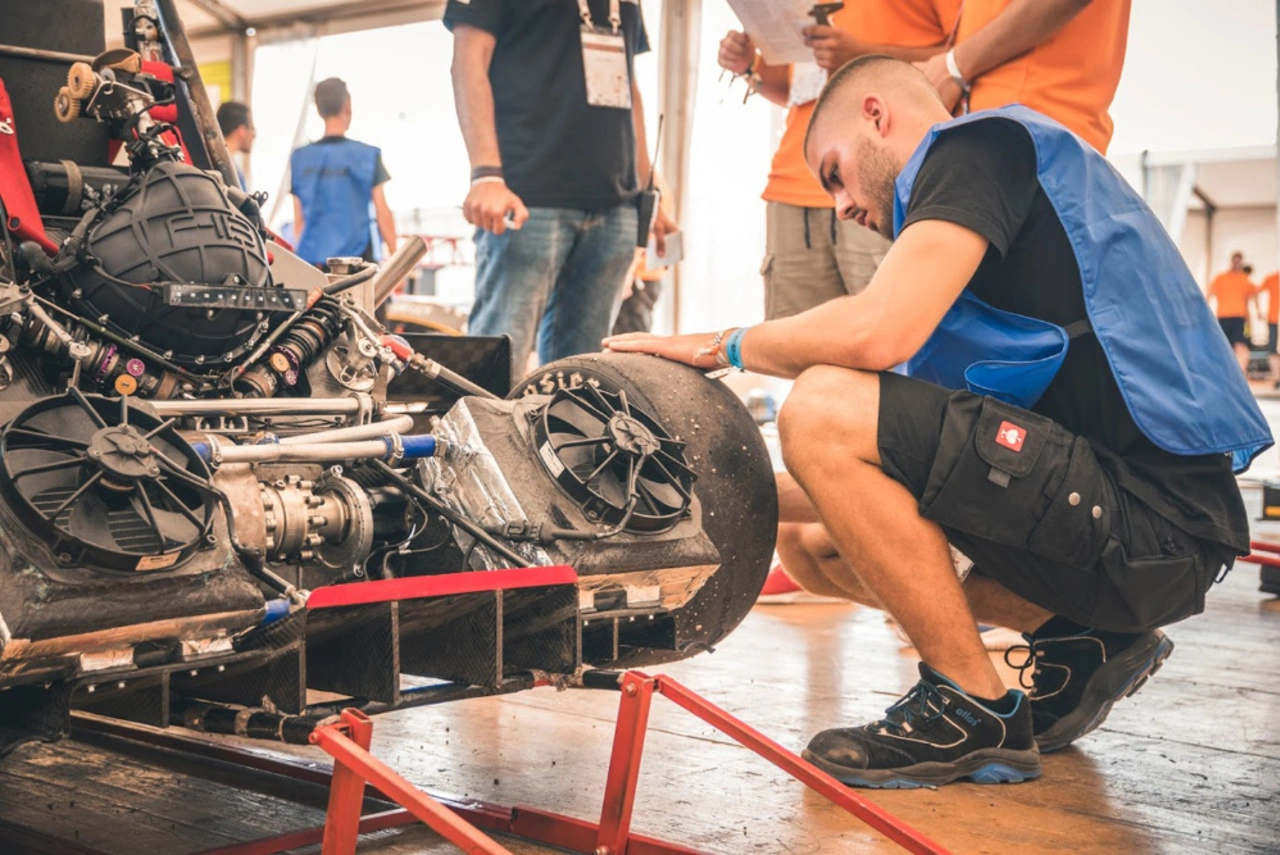With improved control elements
Karlsruhe University of Applied Sciences wins Formula Student
The Formula Student – a competition in which student teams from all over the world compete with their self-made cars. A team from Karlsruhe University of Applied Sciences has also been taking part for 13 years. For the first time they are at the top of the podium.
The Formula Student is a design competition for compact, small racing cars in which teams from different academies and universities compete against each other. Points are awarded in various categories in different countries and tracks. It is not only about speed, but also the acceleration and braking performance as well as construction, weight and production costs. In the end, the team with the most points wins.
Victory after initial problems
Two weeks ago in Hockenheim, the »High Speed Karlsruhe« team from the Karlsruhe University of Applied Sciences was still struggling with technical problems. They presented the best cost plan, but in the 22 km long main race problems with the airbox prevented a good result. The airbox serves to calm the intake air of a combustion engine. But the students of the Karlsruhe University were able to solve the problems until the next race in Spain.
In an exciting finale at the Formula 1 circuit »Circuit de Barcelona-Catalunya« in Spain the team from Karlsruhe won just ahead of the University of Valencia. They scored valuable points with the 1st place in the main race. But they also scored in terms of efficiency, for example fuel consumption, with 2nd place. The team also scored important points in lateral acceleration. In total, they scored 863.4 out of 1,000 points, just ahead of the students from Valencia who scored 860.3 points.

Improvements lead to success
For the new season the students could improve their car in some points. The chassis was equipped with new spring-damper elements and the shock absorber mounts on the body were changed. The flow conditions were adapted using computer-based simulations. The engine performance was also increased - with the help of a new fuel, E85 instead of super petrol. The whole thing was tested on a specially developed test bench at the university.
The dash panel, for example the electronic control elements in the steering wheel, was extended by several functions. For instance, the driver is shown the temperature of the individual tires or a blocking warning for the wheels. Additional retrievable information about all conditions of the racing car is particularly helpful in the test phases, as the data can no longer be read out via a PC. As in every modern development and production process, the entire vehicle was created as a model in the computer using CAD systems. This not only produced the required manufacturing data, but also enabled the simulation and calculation of the various components and functions. The components were then individually manufactured and tested.





